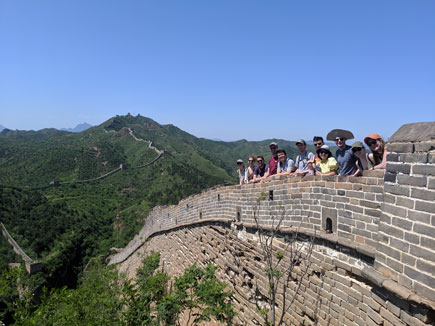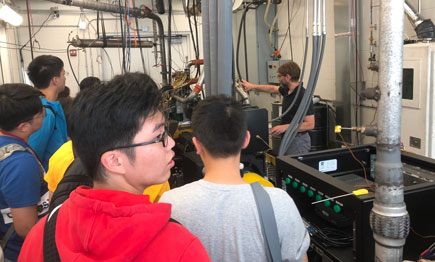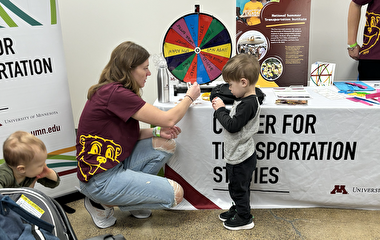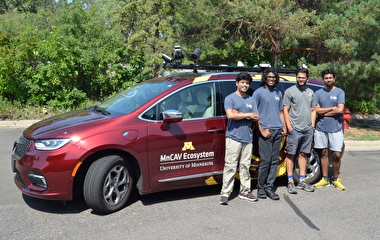trip in May.
Students from the US and China gained insight into transportation and urban development through recent education activities offered by the U’s Global Transit Innovations (GTI) program.
For the third year, GTI coordinated a May term study-abroad course that included visits to major Chinese cities. The three-credit, graduate-level course—PA 5880: Planning for China’s Urban Billion—was offered by the Humphrey School of Public Affairs.
The intensive two-week course familiarized students with urban planning practices and emerging development issues in five unique Chinese cities: Beijing, Xiong’an, Shenzhen, Guangzhou, and Hong Kong. It was led by GTI director Yingling Fan, a professor in the Humphrey School.
The course integrated guest lectures, site visits, and cross-cultural classroom activities. For example, students examined Beijing through the lens of its oldest neighborhoods, which have faced destruction as the city and China relentlessly modernize. “We learned about the application of advanced urban sensing technologies to collect data on urban processes and transform how communities engage with neighborhood planning and development,” Fan says.
The students also made a one-day visit to Xiong’an, a new urban area located about 100 kilometers southwest of Beijing. Established in April 2017, Xiong’an was “hand-picked by Chinese president Xi Jinping as the dream city for his ‘thousand-year’ plan to transform the area into a high-technology hub of the region,” Fan says.
Laboratory during their time in Minnesota.
Seventeen students from eight departments across the University of Minnesota completed the course. One was Shannon Evans Engstrom, a Humphrey School graduate student in urban and regional planning. “The trip made a big impact on me and my career,” she says. “Studying transportation and land-use planning in China is particularly valuable because the government is able to do things we cannot do in the US, for better or worse. For example, a big takeaway for me was just how much they are able to do with technology and data.”
In a reverse commute, 31 students from five Chinese universities spent four weeks in the US this summer. Students from Southeast University, Northwest University, Southwest Jiaotong University, Beijing University of Technology, and Central South University participated in the program, which included courses on urban planning, transportation, and Geographic Information Systems. They also attended a variety of transportation-focused activities both on and off campus, including a tour of the I-35W reconstruction project in Minneapolis. The program, first offered in 2016, was developed by CTS, GTI, and the U of M China Center’s Mingda Institute.
In addition, GTI hosted four visiting scholars this spring semester. The scholars—from four different universities—connected with the transportation community in the Twin Cities region to discuss their research and exchange knowledge.
GTI is an affiliated program of CTS. Its education component aims to attract bright minds to the transit-planning field and educate practitioners and agency staff.




